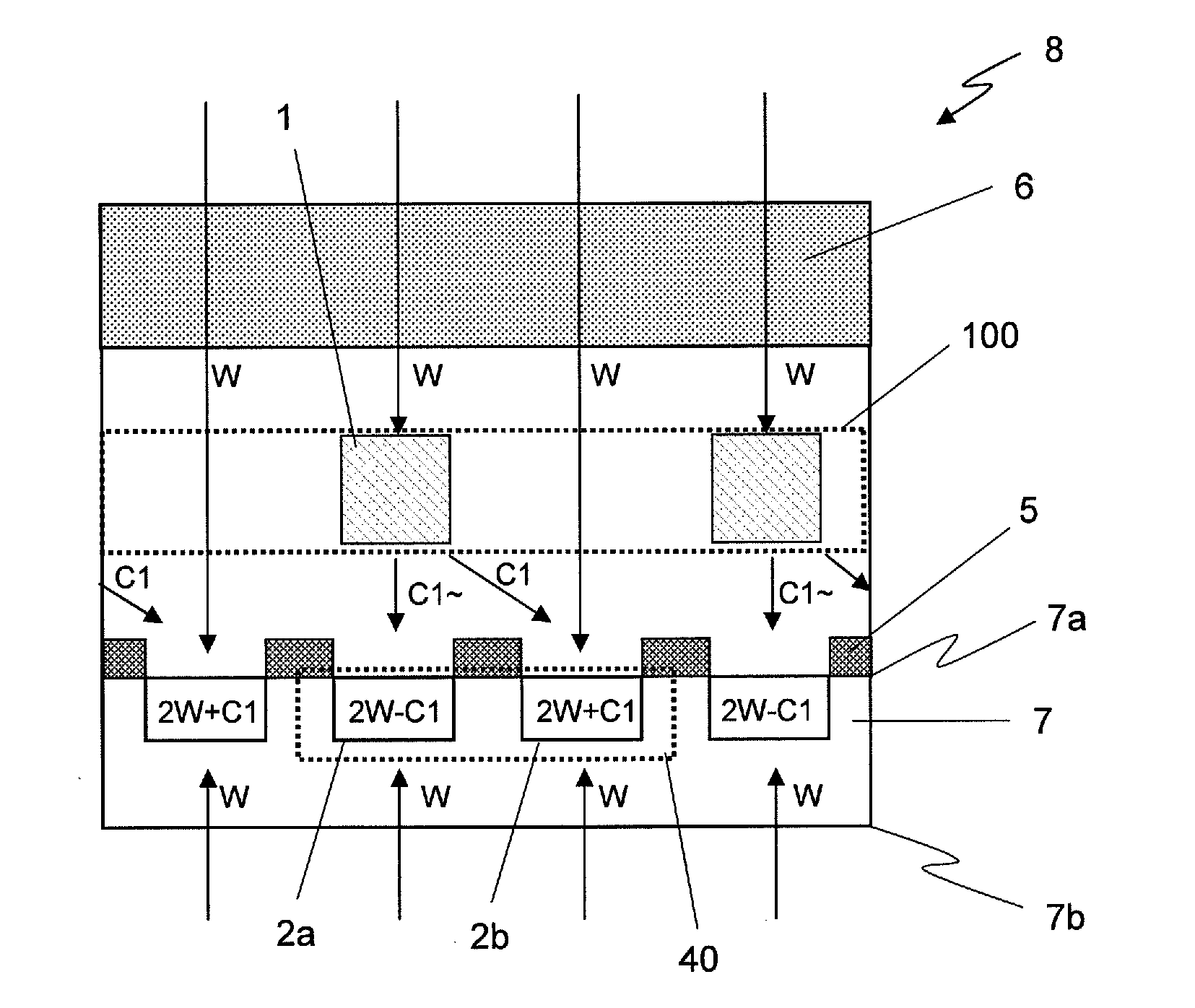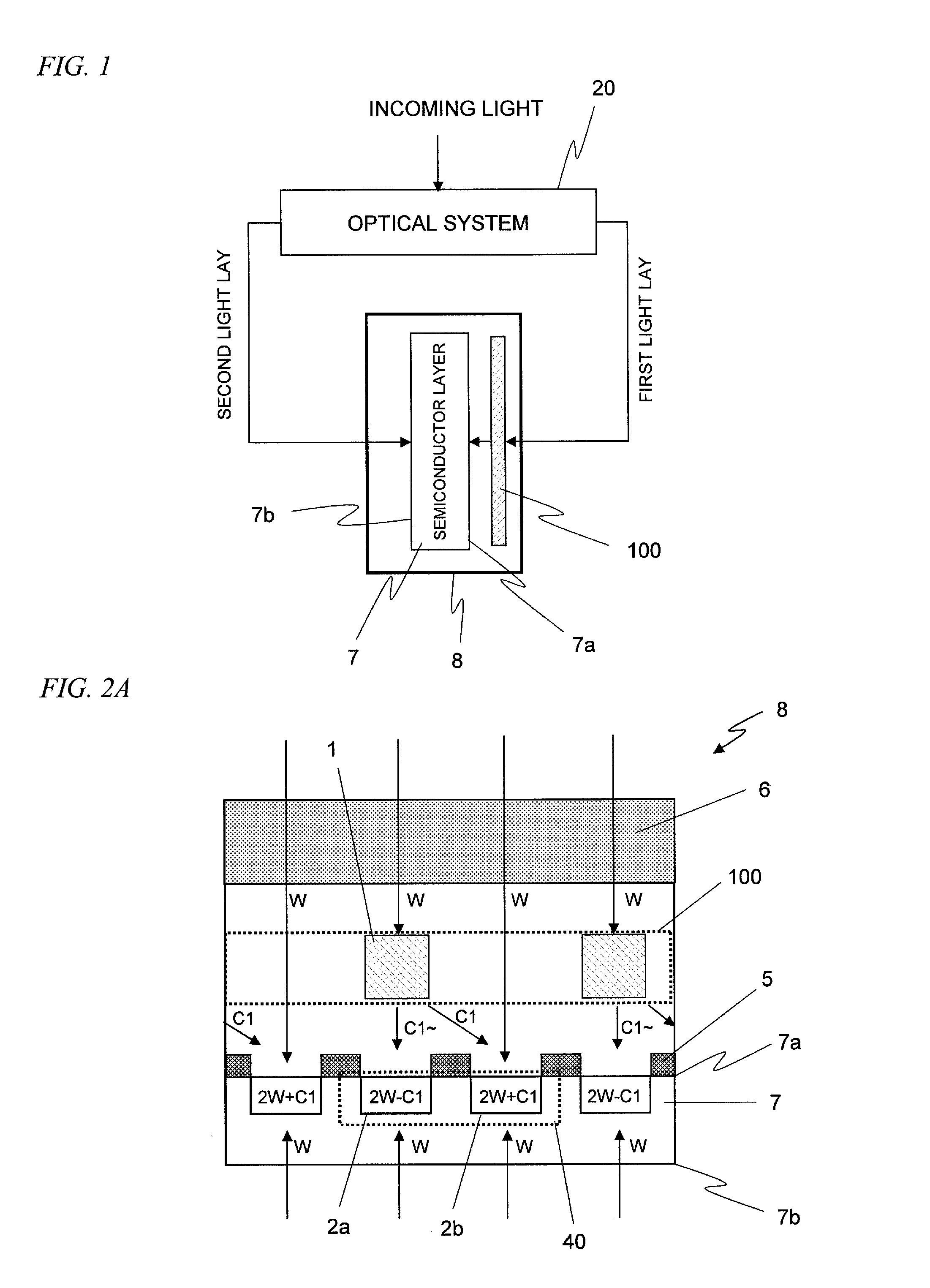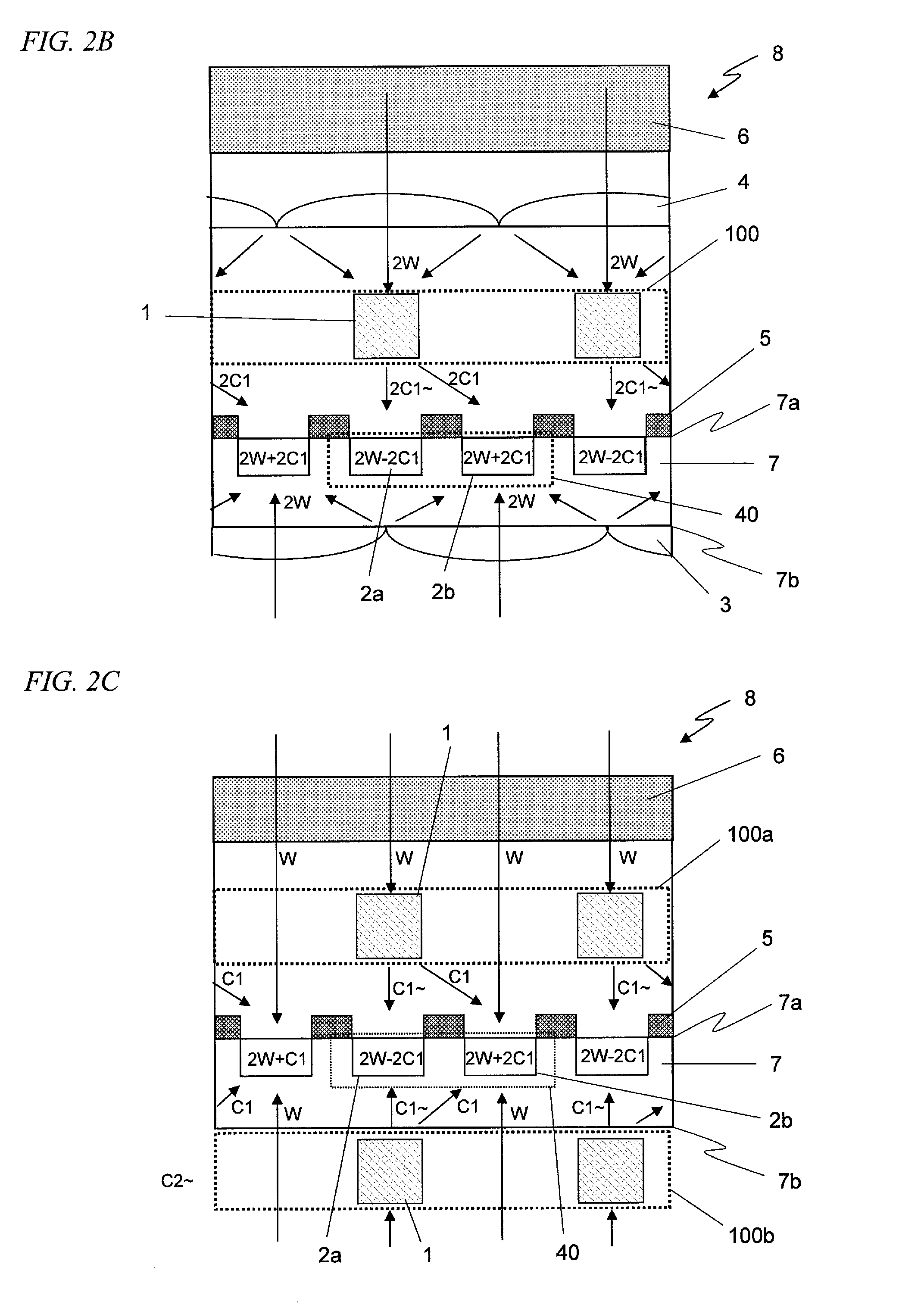Image pickup device and solid-state image pickup element
a pickup device and image technology, applied in the direction of television system scanning details, radio control devices, television systems, etc., can solve the problems of low optical efficiency achieved, low optical efficiency of cameras, and low intensity of light falling on a single pixel, so as to improve optical efficiency and reduce the density of dispersive elements to be arranged per side , the effect of easy manufacturing
- Summary
- Abstract
- Description
- Claims
- Application Information
AI Technical Summary
Benefits of technology
Problems solved by technology
Method used
Image
Examples
embodiment 1
[0069]First, a First Specific Preferred Embodiment of the present invention will be described. FIG. 3 is a block diagram illustrating an overall configuration for an image capture device as a first preferred embodiment of the present invention. The image capture device of this preferred embodiment is a digital electronic camera and includes an image capturing section 300 and a signal processing section 400 that receives a signal from the image capturing section 300 and outputs a signal representing an image (i.e., an image signal). The image capture device may either generate only a still picture or have the function of generating a moving picture.
[0070]The image capturing section 300 includes an optical system 20 for imaging a given subject, a solid-state image sensor 8 (which will be simply referred to herein as an “image sensor”) for converting optical information into an electrical signal by photoelectric conversion, and a signal generating and receiving section 21, which not on...
embodiment 2
[0108]Hereinafter, a second preferred embodiment of the present invention will be described with reference to FIGS. 7A through 7C. The image capture device of this second preferred embodiment has dispersive elements with a different property from the counterparts of the image capture device of the first preferred embodiment described above but the other components of the second preferred embodiment are no different from those of the first preferred embodiment. Thus, the following description of the second preferred embodiment will be focused on only the difference from the image capture device of the first preferred embodiment and the description of their common features will be omitted herein.
[0109]FIG. 7A is a plan view illustrating the pixel arrangement of the image sensor 8 of this preferred embodiment as viewed from over the front surface thereof. In this preferred embodiment, a matrix of pixels that are arranged in two columns and two rows is also used as a fundamental unit of...
PUM
 Login to View More
Login to View More Abstract
Description
Claims
Application Information
 Login to View More
Login to View More - R&D
- Intellectual Property
- Life Sciences
- Materials
- Tech Scout
- Unparalleled Data Quality
- Higher Quality Content
- 60% Fewer Hallucinations
Browse by: Latest US Patents, China's latest patents, Technical Efficacy Thesaurus, Application Domain, Technology Topic, Popular Technical Reports.
© 2025 PatSnap. All rights reserved.Legal|Privacy policy|Modern Slavery Act Transparency Statement|Sitemap|About US| Contact US: help@patsnap.com



